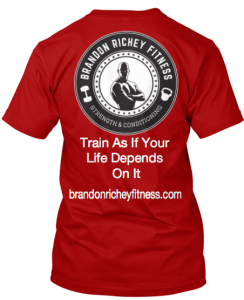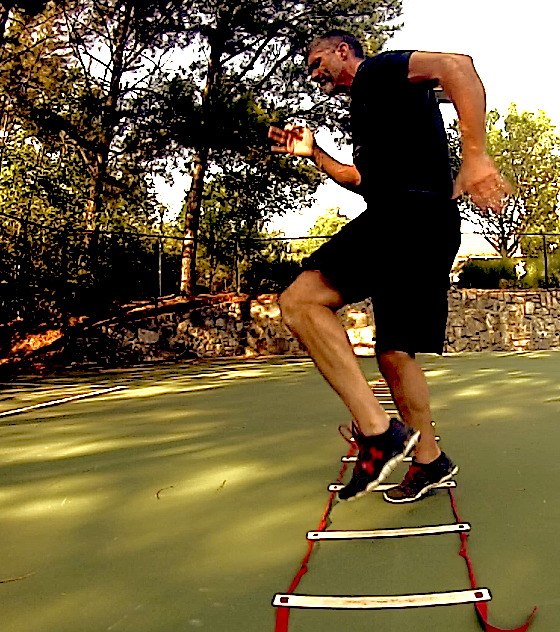
How Balanced Is Your Training With Accessory Exercises
From being in the strength and fitness business now for over 14 years one thing that seems to amaze me is the imbalance of accessory work that is used in many people’s training programs. In much of my experience there seems to be many people that will train with quite a bit of imbalance in terms of how their workouts are structured.
Accessory Exercises
Accessory exercises are meant to be those drills that we work on after performing the bigger primary lifts within our training program. For instance, you may train the bench press and incline dumbbell presses as your bigger primary lifts on your more upper body training days and from there you may eventually trickle down to working on lateral raises and bicep curls. The latter would qualify as accessory work.

Now for today’s post I’m going to be addressing how to balance accessory work and what type of accessory work would be best for certain goals included within your training. Buckle your chinstrap my friend and get ready to go to work!
Over the years I’ve noticed two very opposing extremes that many folks tend to fall victim to when training out of balance within the structure of their workouts. For instance, they may include big primary lifts such as bench, squat, and deadlift into their training and then it just simply ends right then and there! Yep, that’s it…they’re done with their training for the day.

In this example these people are cutting themselves short in their training by not performing any other movements to help their performance, or to supplement their strength gains in ways that they just aren’t going to get by limiting themselves solely to the bigger primary lifts.
On the flip side I’ve also seen many people go into a gym and include nothing but accessory exercises, and neglect to attack any big primary movements for the sake of building true strength and lean muscle. These people tend to lack a foundation in their strength and performance development, and do not tend to possess any real satisfactory level of functional capacity for the purposes of just moving and picking shit up.
The problem is simple. The solution is simple. It’s all about balance. As you train you should work to develop a strong foundation first by attacking the big primary lifts. Next, you should include a secondary level of movement that should include a healthy amount of accessory work. These movements should supplement your lifting and help you to build on mastering your body’s movement abilities.
Accessory exercises can include a whole bunch of stuff depending on what your goals are for the day’s training. As a general rule of thumb I’m a big proponent of including single limb training (unilateral training) into the equation.
For instance, if we are having a big squat day then I may supplement that primary movement with lunges, step ups, or single leg deadlifts. As a matter of fact I’m a huge fan of single leg deadlifts because of the amount of hip stability involved when performing the movement.
As you can see the amount of control that is needed to pull off this movement has the stabilizers firing like crazy in the hip, knee, and ankle. One thing I can say with great certainty is that when I find myself getting stronger in my accessory lifts such as this one…my primary lifts go up big time. The same can be said for my students as well.
I notice that when I’m performing the accessory lifts with greater weight and control the next day I jump to attack my big primary movements everything just seems to go a lot smoother. I just notice that I can perform the big primary lifts with a great deal more control and confidence. This is usually the case and is most always a sign that a new PR is on the horizon.
The Takeaway
The key to getting all the bang for your buck out of your training is to make sure it is balanced. Just training all primary lifts and no accessory lifts, OR all accessory lifts and no primary lifts is a sign of flawed training in my book.
The point of training is that you should want to master your body and when it comes to mastering the body other factors must come into play such as taking the time to train in movements that we may not like simply because we may not be good at them. That’s the point. If all we did was train the lifts we were good at all the time then we’d all quickly find that those plateaus and ceilings tend to come a lot sooner than we may like.
Additionally when including accessory lifts also make sure to emphasize single limb, or unilateral movements into the equation. You don’t have to do a lot of volume in your accessory movements, but make sure that what you are doing is based on quality and the results you want will come a lot faster.
I hope you enjoyed today’s post. What kind of accessory exercises are you including into your training? Don’t be shy…post up in the comments below! Stay strong, train smart, and train as if your life depends on it!
Also now for a limited time place your order and reserve a new BRF Train As If Your Life Depends On It T-shirt on Teespring featuring the new BRF ghost man logo and strength and conditioning seal! You only have 14 days to place your order and these are available for both men and women.
Related Articles:
3 Medicine Ball Exercises For Lean Muscle, Power, And Coordination
A Hybrid Approach To Conditioning
5 Ways To Develop Power While Getting Lean
Examining The Single Arm Kettlebell Swing
Get Free Updates And Training Guides Here








